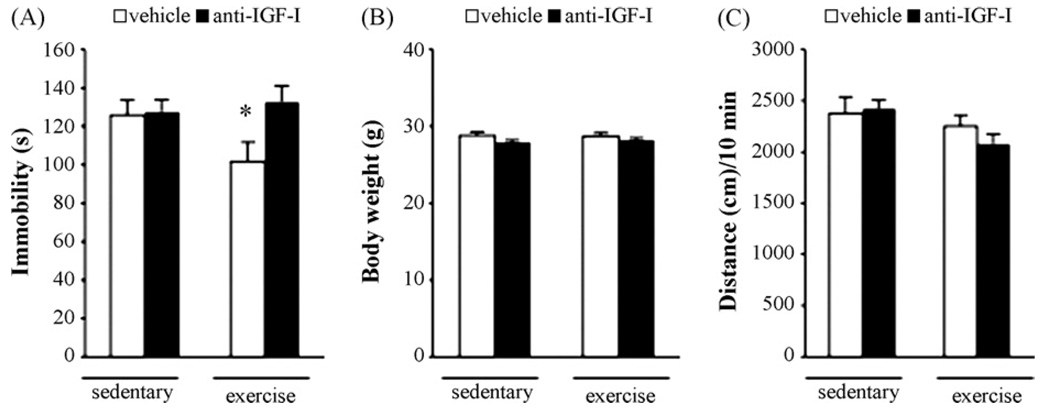Fig. 3.
Anti-IGF-I antibody administration blocks the antidepressant-like effect of chronic exercise in the forced-swim test (FST). (A) Exercising mice given free access to running wheels in their home cages for 4 weeks show an antidepressant-like decrease in immobility and this effect is blocked in exercising mice that concurrently received continuous peripheral anti-IGF-I infusion. ANOVA: F(3, 58) = 2.72, p = 0.05. Fisher’s protected least significant difference (PLSD) post-hoc test: *p = 0.04 vs. sedentary control and p = 0.01 vs. exercise + anti-IGF-I. Bars represent the mean±SEM from two separate experiments, n = 15–16/group. (B) Body weights and (C) baseline locomotor activity were not significantly altered by exercise or by anti-IGF-I treatment. Bars represent the mean±SEM from two separate experiments, n = 15–16/group.

